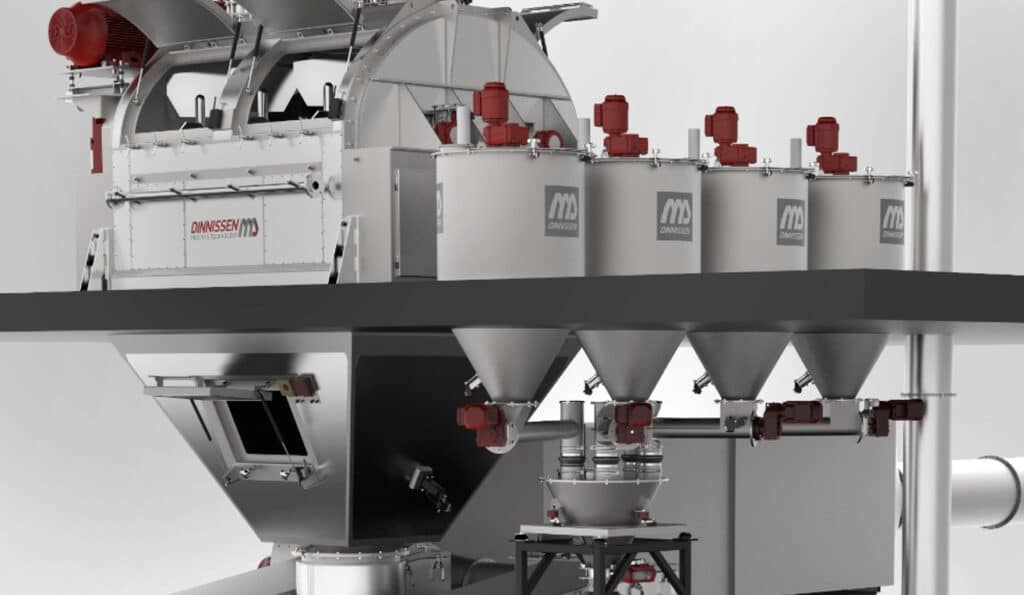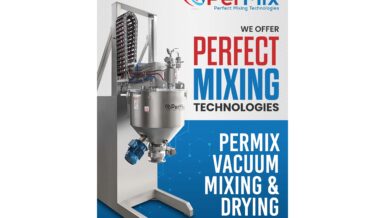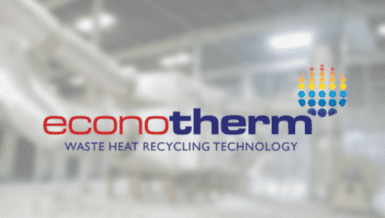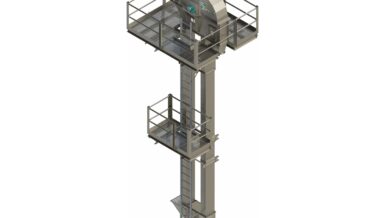Preventing contamination (e.g. Salmonella) is of utmost importance when processing feed, pet food and food. In this article Dinnissen Process Technology shares their insights on thermal processing as the most effective way to sterilize product while maintaining product homogeneity. Today, most producers prefer this thermal treatment by steam injection over liquid treatments with acids and chemicals. The main reason for this is that chemical treatments leave traces of chemicals (e.g. chlorine with it specific smell) in the product. Additionally, these liquids can change the structure of the product and lead to segregation of the product.
Sterilizing with steam is a natural method and is widely considered the best solution to prevent contamination. A few years ago, Dinnissen first introduced their Thermidor®-system: a multi-stage thermal treatment solution for the sterilization of feed, food and pet food. The Thermidor® system is extremely effective; it reduces the population of microbes by 99.999%. And perhaps more importantly: no segregation occurs. In conventional methods the product needs to be mixed again to get a 100% homogenous product. The Thermidor® system ensures that product composition remains perfectly homogeneous after cooling, heating and drying. This way producers can guarantee their customers that their product is safe and of the highest quality.
This article is about:
- How to prevent product contamination.
- How thermal treatment works, how it prevents segregation and how producers can improve product quality in the mixing process.
- How cooling processes can even improve the structure of the feed, which results in a smooth product flow.
- How Dinnissen integrates their Thermidor® thermal treatment system in their multifunctional processing mixing solutions.
- How a vertical setup of processing equipment results in optimal efficiency.
How does the sterilization process work?
How to prevent product contamination
Every producers has the same goal: making sure that their products arrive in the best possible condition at their customer’s premises. Product safety is always the first priority, so preventing contamination is essential. That is why producers pay a great deal of attention to hygiene in every step of their production process: from product intake to packaging and transport. For efficient and effective hygienization of (aqua) feed, pet food and food products, production processes must take place within perfectly controlled process conditions. The production site must be kept free of e.g. Salmonella. The first step is the handling at entry. It is important to isolate the product as quickly and as well as possible. Optionally, ingredients can be treated individually as one component upon entry. Only after sampling and laboratory results have proven the quality and purity of the ingredients are they processed further. To guarantee a fully hygienized product upon delivery to the customer, it is wise to sterilize the product as late in the process as possible. This minimizes the risk of recontamination.
As briefly mentioned before, the Thermidor ® thermal processing system is integrated in the mixer. The Thermidor®-system can be divided in phases: 1) heating by steam injection and 2) drying by cooling. Both phases take place during the mixing process and a fluidized bed created in the mixer enables a fast and efficient drying and cooling process.
Heating by direct steam injection
In the heating process, concentrations of microbes in the mixer are broken down due to a direct injection of steam. Steam is used because moist heat is most effective in eliminating microbes and pathogens. The steam is added during mixing, because heat transfer between steam and product is optimal when both the product and steam are in motion. This results in an highly efficient heating process, where the entire batch is heated uniformly to a specified temperature, for a specified time (e.g., 75-85°C for about 4 minutes).
This sterilization process results in a 99.999% (or 5 log) reduction in the population of microbes (all forms of microbiological life, including bacterial endospores).
Thanks to this thermal treatment, the risk of product recall, spoilage, contamination, diseases (and fines that may accompany them) is practically zero.
Drying and cooling with conditioned air
During the heating process the product absorbs the heat of the steam. In the cooling section, the heat and moist are dried by air. This way the product is cooled down to its entrance temperature.
To prevent recontamination of the just decontaminated product, it’s critical that clean and conditioned air is used. To provide the required clean air for the drying process, a high-efficiency particulate air (HEPA) filtration system is used. This multi-stage -from coarse, to medium, to fine- and closed-loop filtration system guarantees that only clean air enters the mixer, and that it remains clean throughout the entire process.
A key element of this multi-stage thermal treatment system is that the product is gently mixed continuously during both heating and cooling. This results in a consistent, homogeneous output with no segregation or decomposition of the product. In addition, this sequence of first heating and then cooling back products provides the opportunity to add (and dose) heat-sensitive powder components and liquids, as a last process step to finalize the product.
An additional advantage of this process is that the structure of the product hardens and becomes less viscous during drying, which greatly improves product flow.
Dinnissen on their Pegasus® all-in-one mixing unit with Thermidor-system

At Dinnissen, we are always looking for ways to innovate and optimize the production processes of our customers.
The Thermidor®-system is another so-called customer-driven innovation.
A valued customer asked us to design and produce an efficient production process (including product intake, mixing, processing, transportation, storage and packaging) that would produce pure and homogeneous product, without any contamination.
In the process overview (see image) you see the result.
We succeeded in creating the fastest and most efficient sterilization process in the market.
The vertical design ensures optimal efficiency. Not only in terms of output, operating costs and efficiency, but also in the setup of our customer’s production line.
Our mixing unit with Thermidor® system integrates as many as five process steps into a single unit.
This results in not only more efficient processes, but also in our customers needing much less equipment and a smaller production facility.
An overview of the functions and corresponding results of our 5-in-one Pegasus® mixing unit with Thermidor® system.
| Function | Description | Result |
|---|---|---|
| Heating | Fastest and most effective sterilization process, by means of the direct injection of steam | Reduction of 99.999% of the population of microbes |
| Cooling | Innovative air inflow system that more than doubles the efficiency of the cooling step | Extremely effective heat transfer |
| Drying | Drying with clean and conditioned air | Harder and less viscous product, for easy flow |
| Mixing | Mixing during heating and cooling, including functional additives | Perfect and exact homogeneous product, without any segregation |
| Dosing and adding of heat-sensitive liquids and powders | Precise adding and dosing of (heat sensitive!) powders and liquids to improve product characteristics | More opportunities for producers to increase product quality and composition |
But a compact design says nothing about capacity. Recently, we engineered, produced and installed a mixing and sterilization system, that can process up to 12 tons per hour with cycle times of 10 minutes per batch.
How to prevent recontamination: clean conveying and storage of hygienized feed
However, as a system integrator, we emphasize that a perfect sterilization process is only half the battle. Preventing recontamination is just as important. That is why we also ensure hygienic transport and hygienic storage in our solutions. In this regard, it is absolutely vital that transport and storage processes and solutions can also be cleaned very easily.
Therefore, we recommend that the storage of this clean product be physically separated from the raw materials and other departments. Often we create an overpressure in this lean storage area so that there is no migration of dust.
Company profile – Dinnissen Process Technology
With more than 70 years of experience with industrial processes, Dinnissen Process Technology is a leading specialist in the process technology of powders, particles and granules. From product intake, conveying and handling, feeding and weighing, mixing, milling, sifting and packaging. Dinnissen Process Technology optimizes the performance and efficiency of entire production processes with customized solutions. All developed, manufactured, and tested in-house.











































